Director x Young Researchers
A space for young researchers, inspiration, and interdisciplinary fusion
Two young researchers who have devoted themselves to research at iCeMS were invited to share their response and perspective regarding the new vision.
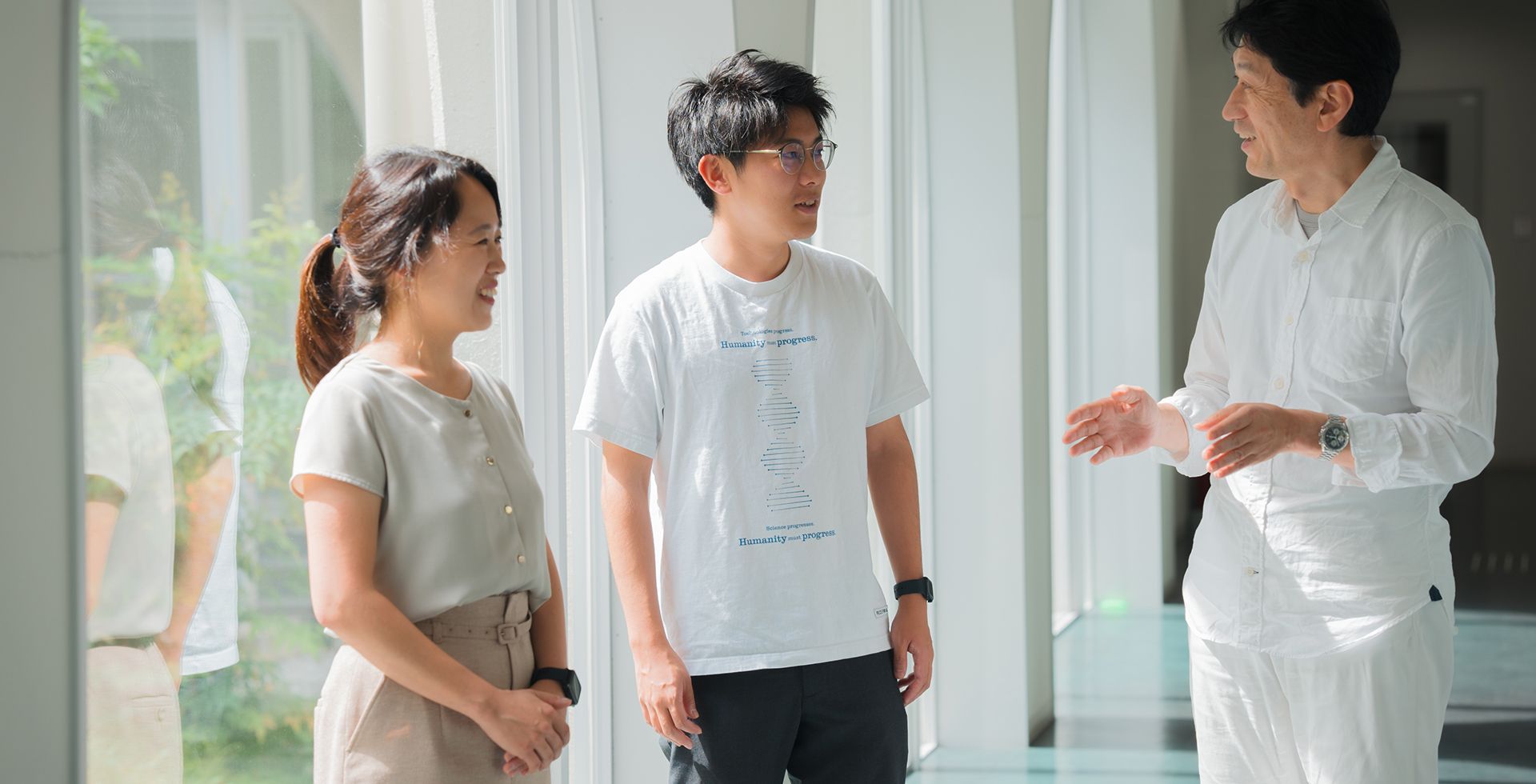
Connected by the Single Concept of Self-Assembly
——Today we would like to give young researchers a chance to share their perspectives on iCeMS' new vision with Prof Uesugi.
Yoshimura Of course I agree with iCeMS' new research vision. Especially the part about "understanding intracellular self-assembly at the boundary between life and matter" (see p2). When I was a student, I spent a long time analyzing protein and small molecule interactions. However, I wondered whether this was an accurate model for living organisms. Inside a cell, proteins do not act alone, I thought that they must always work with something else as a cooperative mechanism.
Uesugi Yoshimura, you were studying biology using organic chemical methods and thought, "I wonder if this is right when living organisms are much more complex and made up of many different things". This is right in line with iCeMS' vision, don't you think.
Yoshimura Yes, that's right. Time was quite constrained when I was a student. I managed to graduate despite being a bit bewildered. Now as a member of iCeMS I am able to pursue my research in a good environment. Coming from chemistry, I want to create tools and techniques to understand biological complexes.
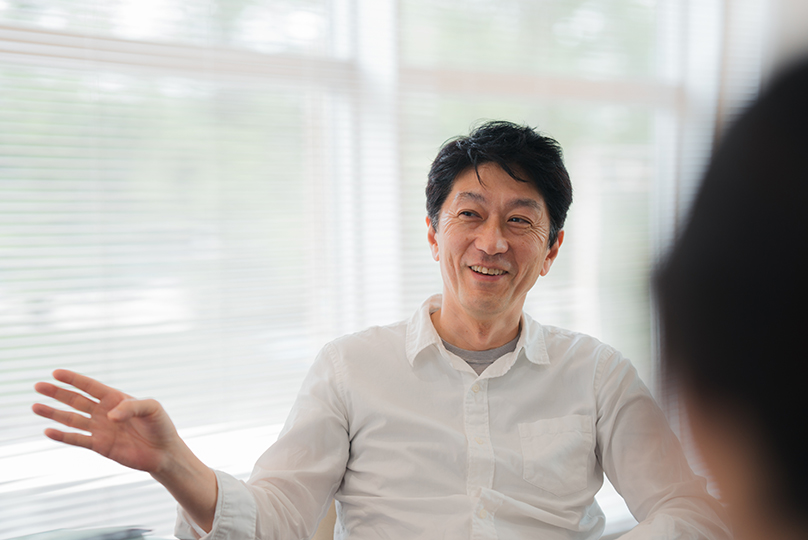
Uesugi The study of self-assembly has long been addressed in the materials field. Relatively new in the biological field, it seems many people have become interested in the last decade. For example, protein self-assembly is a biological phenomenon which cannot be explained just by looking at individual proteins. It must be looked at as an aggregate structure. One might expect materials self-assembly research and biological self-assembly research to be the same thing, but they are not. This is why they have developed separately. Here at iCeMS there are people working on both the material and biological aspects. I hope through further research might reveal that the fundamental principles of the two are the same. What do you think, Kim?
Kim My background is in chemistry. During my doctoral studies, I focused on self-assembly of materials. When dye molecules self-assemble they can exhibit new functions It was fascinating to see how simply changing a methyl group could change the way it assembled or its functionality.
Uesugi I see, you enjoyed investigating materials systems and phenomena. Why did you move to working on self-assembly from a biological approach, as you are doing now?
Kim I had hoped that my research in the field of chemistry could contribute to life science and medicine, but I didn't have the knowledge of what kinds of needs existed or what kinds of life phenomena would benefit from my research. At that time, I began studying biology in Yuichi Taniguchi's laboratory, which was at that time at RIKEN. Now, in the Taniguchi Group at iCeMS, seeking to understand the complex behavior of life and to advance medical science, we consider cells the ultimate self-assembly of small molecules. We are investigating the underlying mechanisms, such as from what point does life seem to exist, gene expression, and how molecules regulate each other.
Uesugi
When I was a student, I also studied synthetic small molecules and natural compounds. As a postdoctoral researcher, I focused on studying gene expression using spectroscopic and molecular biology techniques. After | became independent, I combined the methods I had been doing and began to challenge myself with compound based biological research. Connecting things you found interesting in your research can be one way for researchers to try new things.
Even if they don't seem related now, I expect that after continued contemplation good ideas will emerge. That is how I have approached my research.
Removing Barriers
——Did you two discover anything new when you came to iCeMS?
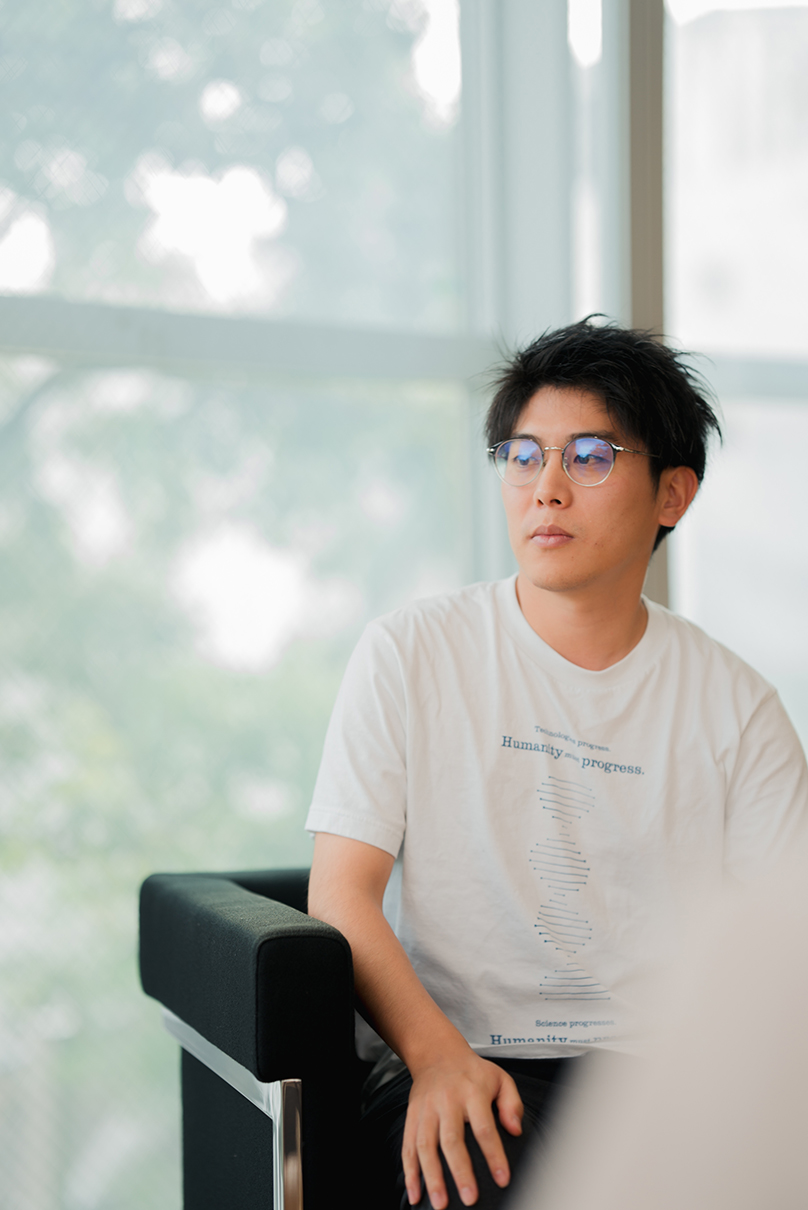
Yoshimura When I was a student I was at the ITbM (Institute for Transformative Biomolecular Research) at Nagoya University. Like iCeMS, ITbM also had open labs, so I was familiar with how to use the space. I was also accustomed to an environment which allowed for free communication. One other thing I really enjoyed was the abundance of shared facilities.
Kim Yes, having a lot of research equipment young people can access, it is like an overseas research institute. It is easy to use and I think it encourages active participation from young members. Prof Uesugi, as the new director, do you have any plans for the type of atmosphere you would like to create?
Uesugi The most important point in the new vision is "Optimizing Internal Communication". With the Corona disaster, I feel we lost not just external communication, but internal also. Now that things have calmed down, I would like to make internal communication better than it ever was before. Improved internal communication will lead to increased efficiency, heightened awareness of compliance, and greater satisfaction among employees. There will be many good things to come. For example, we've started events like the Friday Beer Bash and Teatime, so keep making new research connections.
Kim I am looking forward to it.
Uesugi We also renovated the director's office. We installed a new kitchen and dining area so that we can share simple meals together with researchers and seminar speakers. We also removed what was originally a wall so that anyone can easily enter.
Yoshimura So, Prof Uesugi, for you this is implementing internal communication, right?
Uesugi Exactly. I want to eliminate both mental and physical barriers. Especially since iCeMS' research laboratories are divided between three buildings.
Yoshimura I certainly don't get out of my own research building very often. People who work in the main building, probably don't go to the other research buildings without a good reason either.
Uesugi But with events like the beer bash and teatime, everyone can get together in one place. I want to get rid of the wall between the buildings too. By optimizing internal communication in this way, I want to create an inclusive environment where people with different nationalities, from different fields, can engage in lively discussion while recognizing and respecting our differences. We want to be an institute where everyone can achieve their personal best.
A Place to Become Yourself
——During your everyday research have you encountered situations where you don't feel any barriers?
Yoshimura I'm involved with collaborative research within the facility, and I appreciate how close my colleagues are. The lab instructor who sits behind me is a collaborator, there are people around me whose research themes are close to mine, so it's an environment where I can easily ask questions about both research and work beyond the lab.
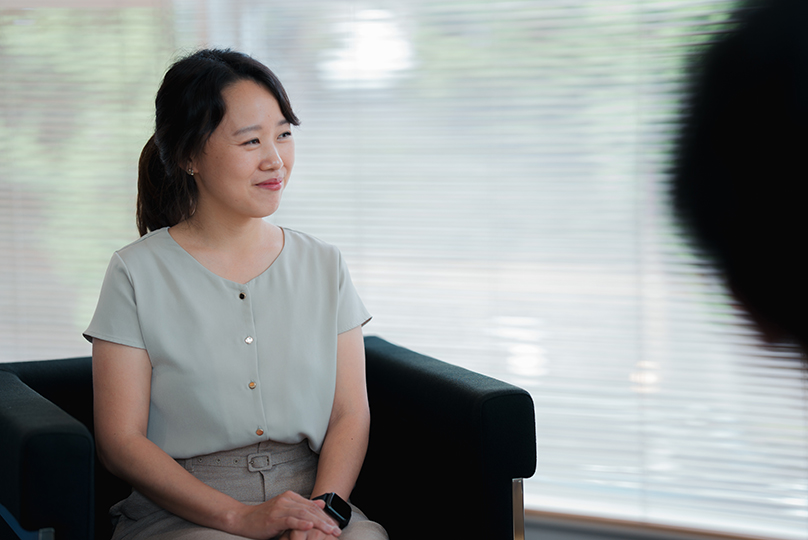
Kim It's great that there are so many experts from different fields here, isn't it! Generally, if you are in biology you specialize in biology or chemistry you stick with chemistry, but it's different here. For example, if during your research you think, "It would be interesting to design some such molecule", you can't synthesize it on your own. But if you call on those researchers around you they will help you out, and there is lab space right there too. It's a place where it is easy to realize the research you want to do.
Uesugi
Communication among scientists has two results. One is what Kim just mentioned, the exchange of skills. Science is international, and it's interdisciplinary, but each scientist has their own nationality and specialization. When there is exchange between people from other countries and exchange of skills, it creates an atmosphere where anything is possible.
The second result is being inspired. There are some who seem to get ideas just through talking with others. It's important for every scientist to aspire to become that kind of person.
Yoshimura Collaborating with researchers around you, you come to understand their background and interests. Sometimes starting conversations like this, "Hey, I have this kind of publication, is it something you are interested in?" has let inspiration flow.
Uesugi l imagine it would be pretty interesting If you have enough people around you who can spark ideas you never even considered. Let's make that kind of institute.
Kim Prof Uesugi, were you surrounded by such people while you were conducting your research?
Uesugi
Yes, observing the researchers around me, "| would like to be like that", I began to think, so to some degree it was easy to move in that direction. I had a clear objective. Conversely, if your objective is unclear, you won't naturally get closer to your goal. This is not just true for people but also for research institutes. I wanted to create an institute where
everyone could clearly understand the objectives. So, the vision must be clear.
Yoshimura Indeed, the new research vision distilled into the single point of self-assembly is very easy to understand.
Uesugi Cell biology and materials science are the flagships areas of Kyoto University. The fusion of the two is the hallmark of this institute. However there are many ways in which biology and chemistry can be combined. So, we clarified self-assembly as the common language between them.
Towards an Era of Interdisciplinary Fusion
——Finally, what is your outlook going forward as researchers as iCeMS transitions to a new vision?
Yoshimura I would like to build my own foundation by piling up some research while I am at iCeMS. There are many young Pls around my age, so even as young members, we can actively participate in discussions. There is a lot of stimulus and so much to absorb. At some point I would like to become a Pl myself, being a member of iCeMS seems like laying the groundwork for the next stage.
Uesugi Yes, I want more people who think like that to gather here. Come to iCeMS, make a breakthrough, and start your own research institute! < laughs> Actually, there are many people who have gone on to institutes abroad after achieving good research results at iCeMS.
Kim
iCeMS has an international atmosphere, like a foreign country even though it is in Japan. So I am sure that if I can build up a track record here, I will gain confidence that I can do the same in any country.
I am personally focused on my research with the Taniguchi Group, but I would like to actively pursue collaborative research with the chemists around me. I am currently an iCeMS Kyoto Junior Fellow, a position like an associate Pl, and I would also like to start my own research area as a Pl at some point.
——Prof Uesugi, do you have any hopes for young researchers?
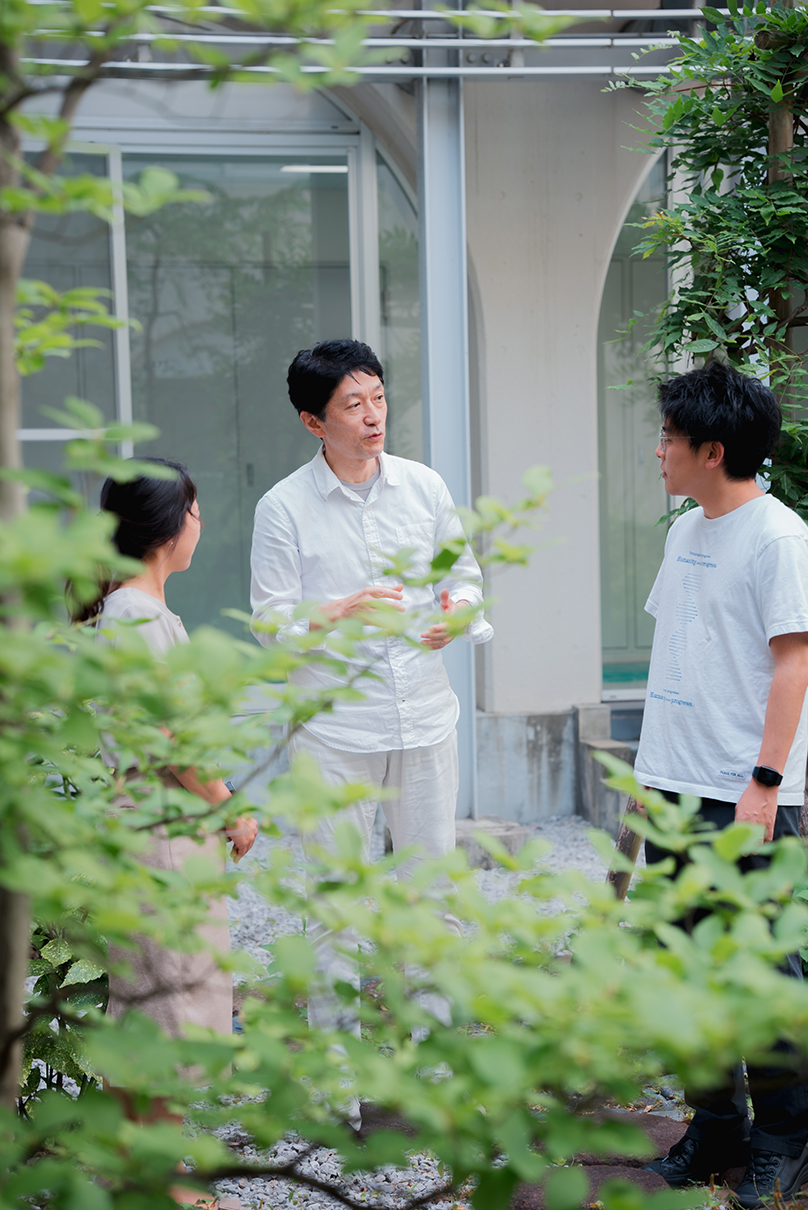
Uesugi More than 15 years have passed since iCeMS was established. The biggest change in the last decade is the remarkable progress in biological research. Living things can be perceived in the same way as materials, phenomena can be understood by looking with our eyes. This is great progress especially considering that when we started, the way of thinking in biology and chemistry were quite different and mutual understanding between the two was sometimes difficult. The two disciplines have come to understand each other and are now connected. I think we have entered an era where integrated research will flourish. For this reason, I hope you can practice your research with a flexible mindset. Research focused on the theme of self-assembly is our ambition, but we are of course also expecting research brimming with imagination to overflow even beyond that.